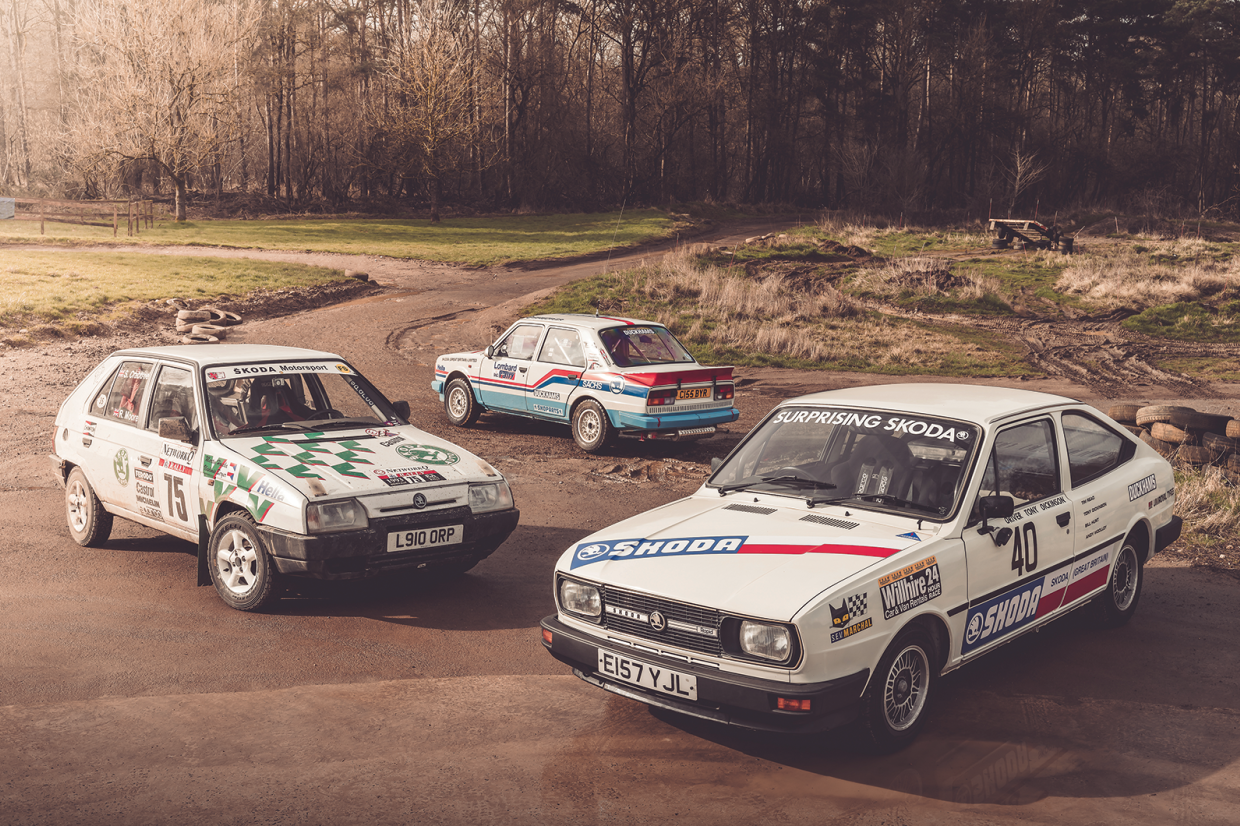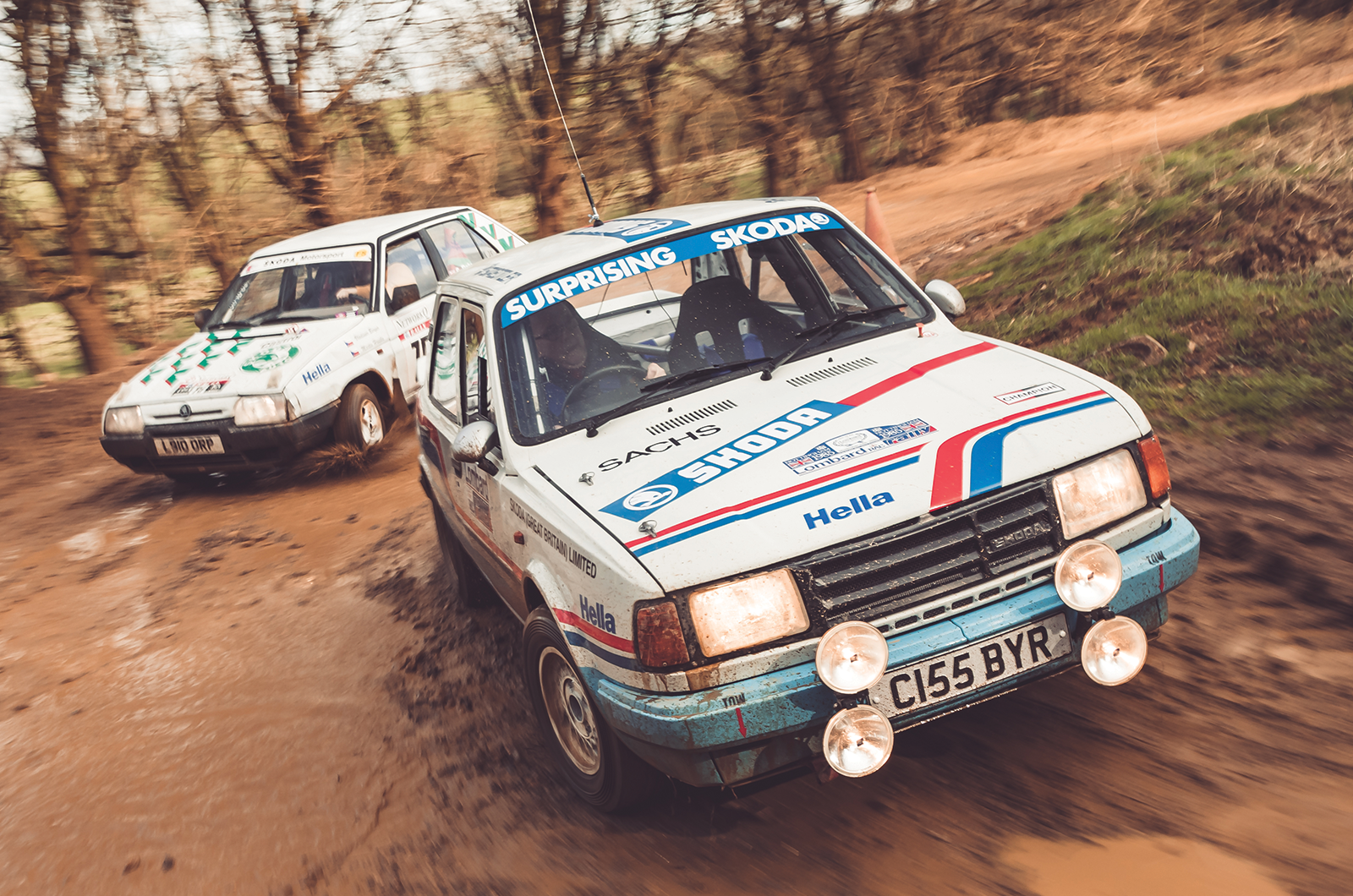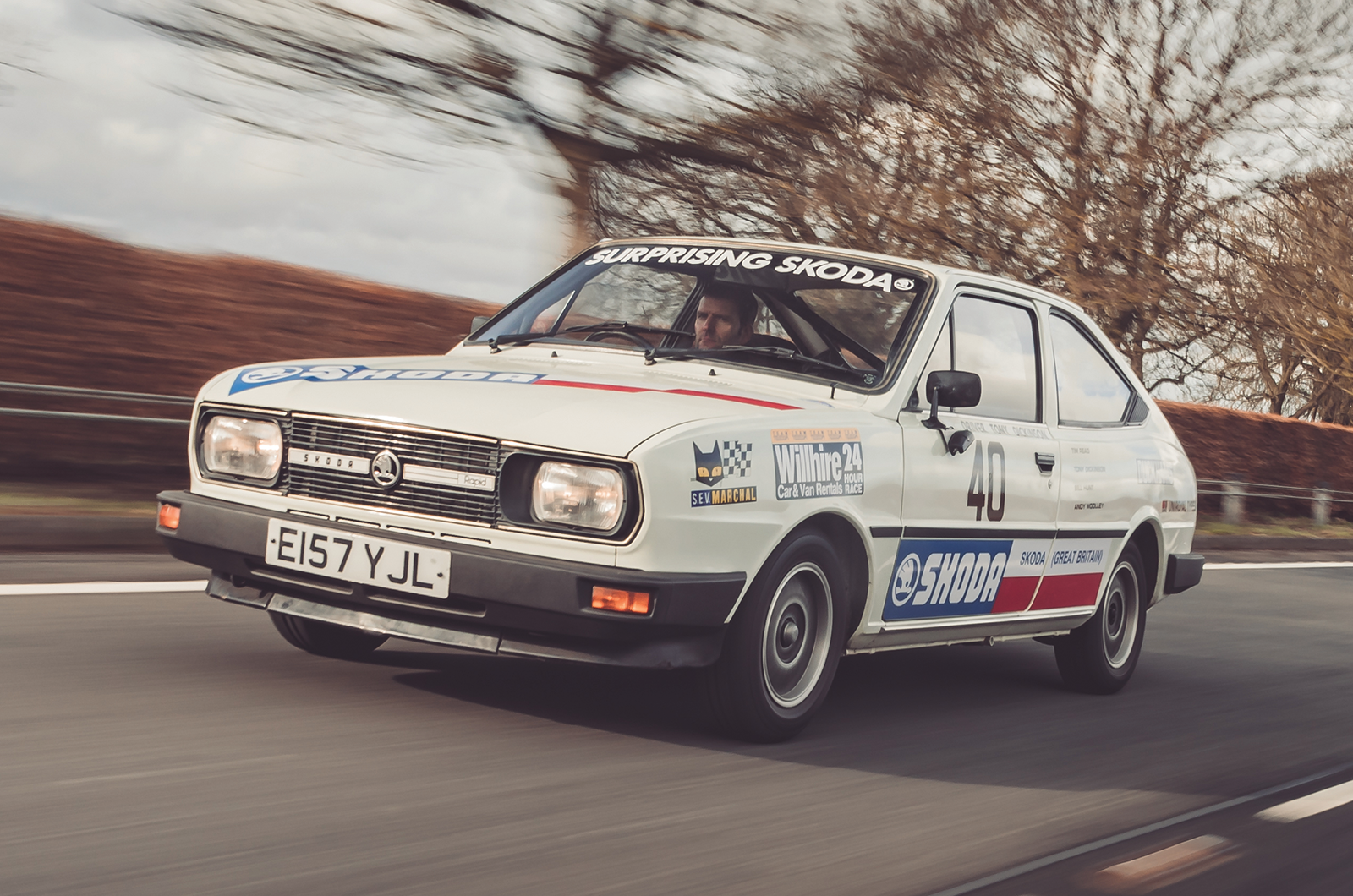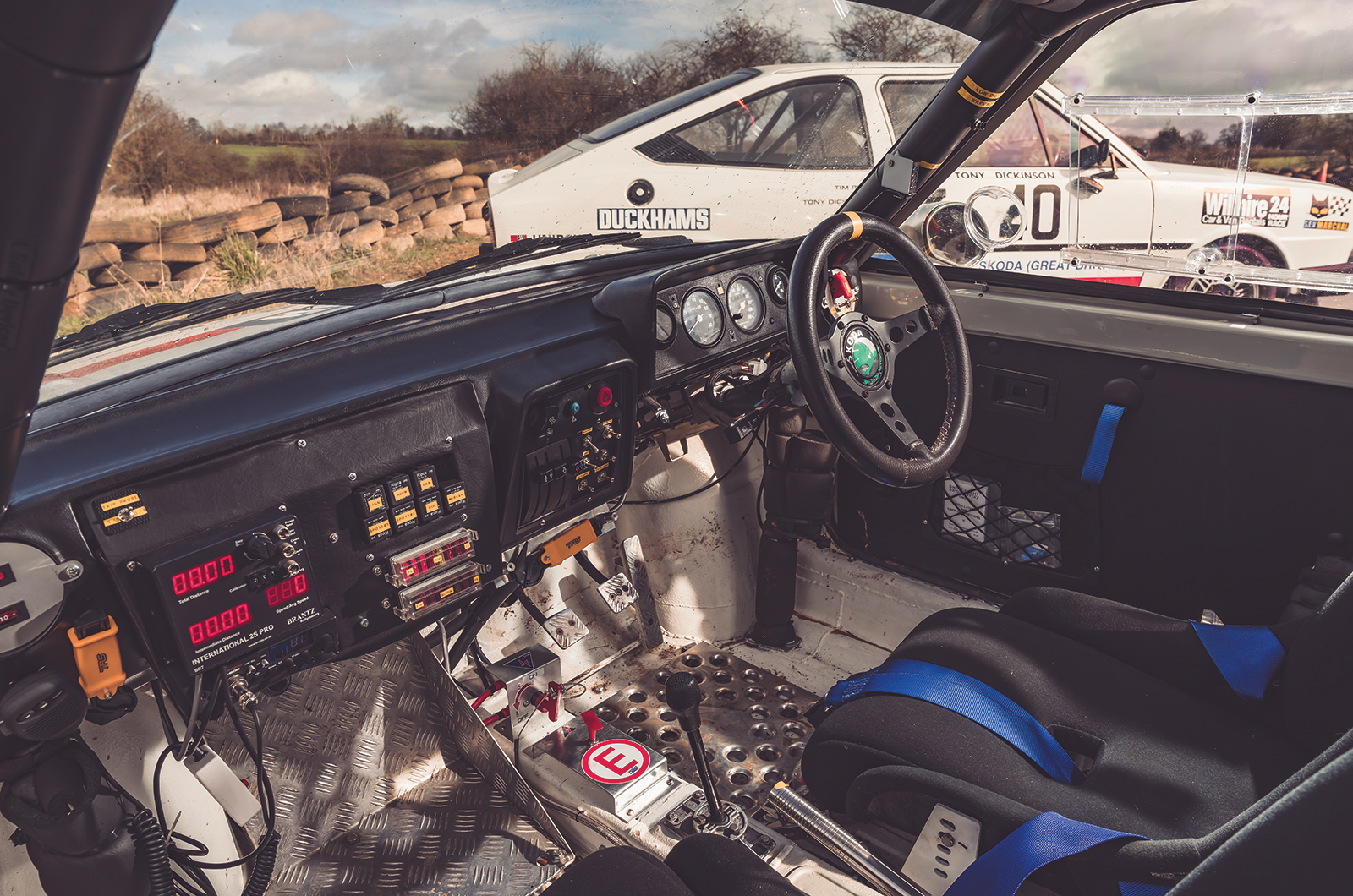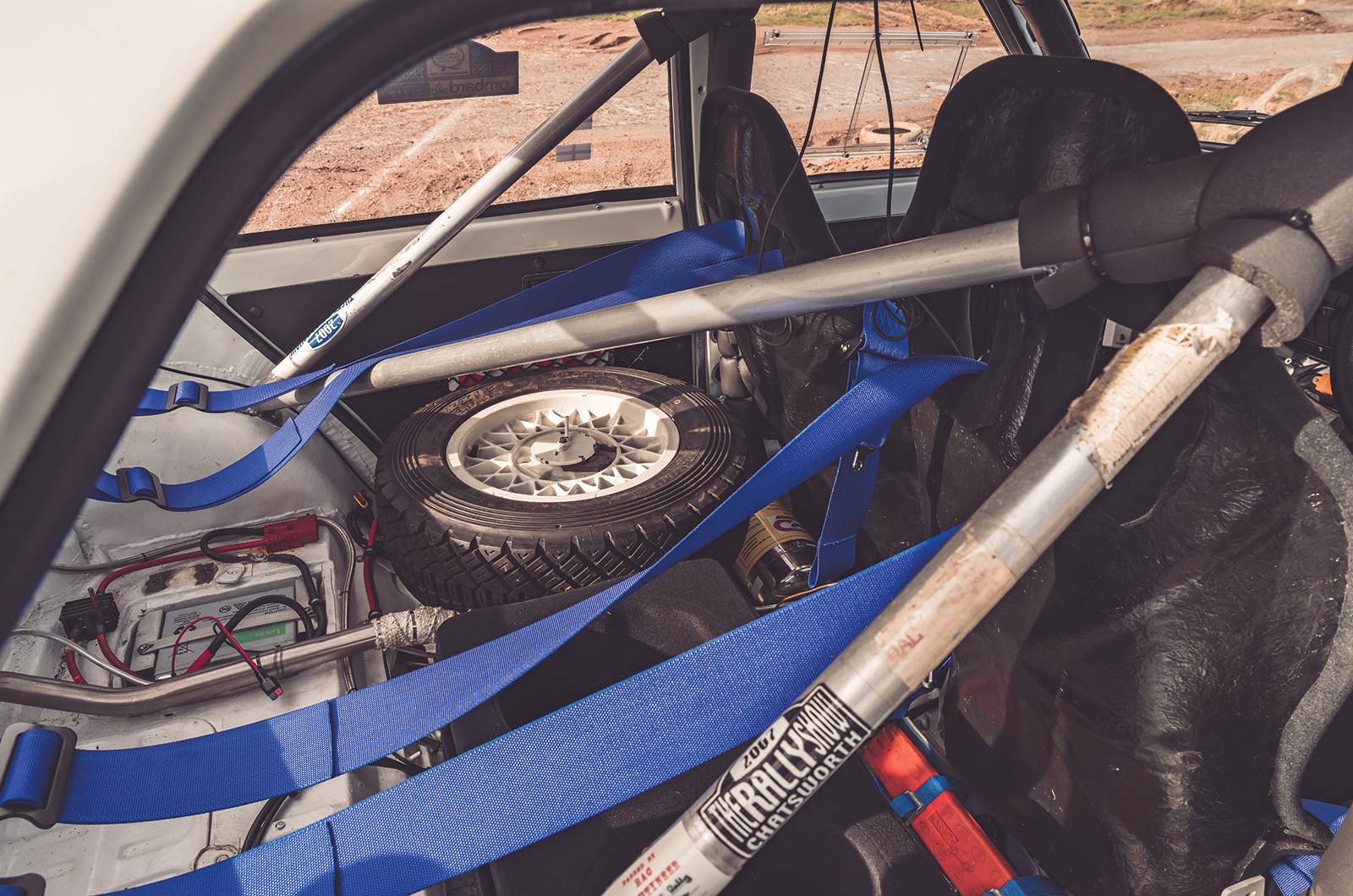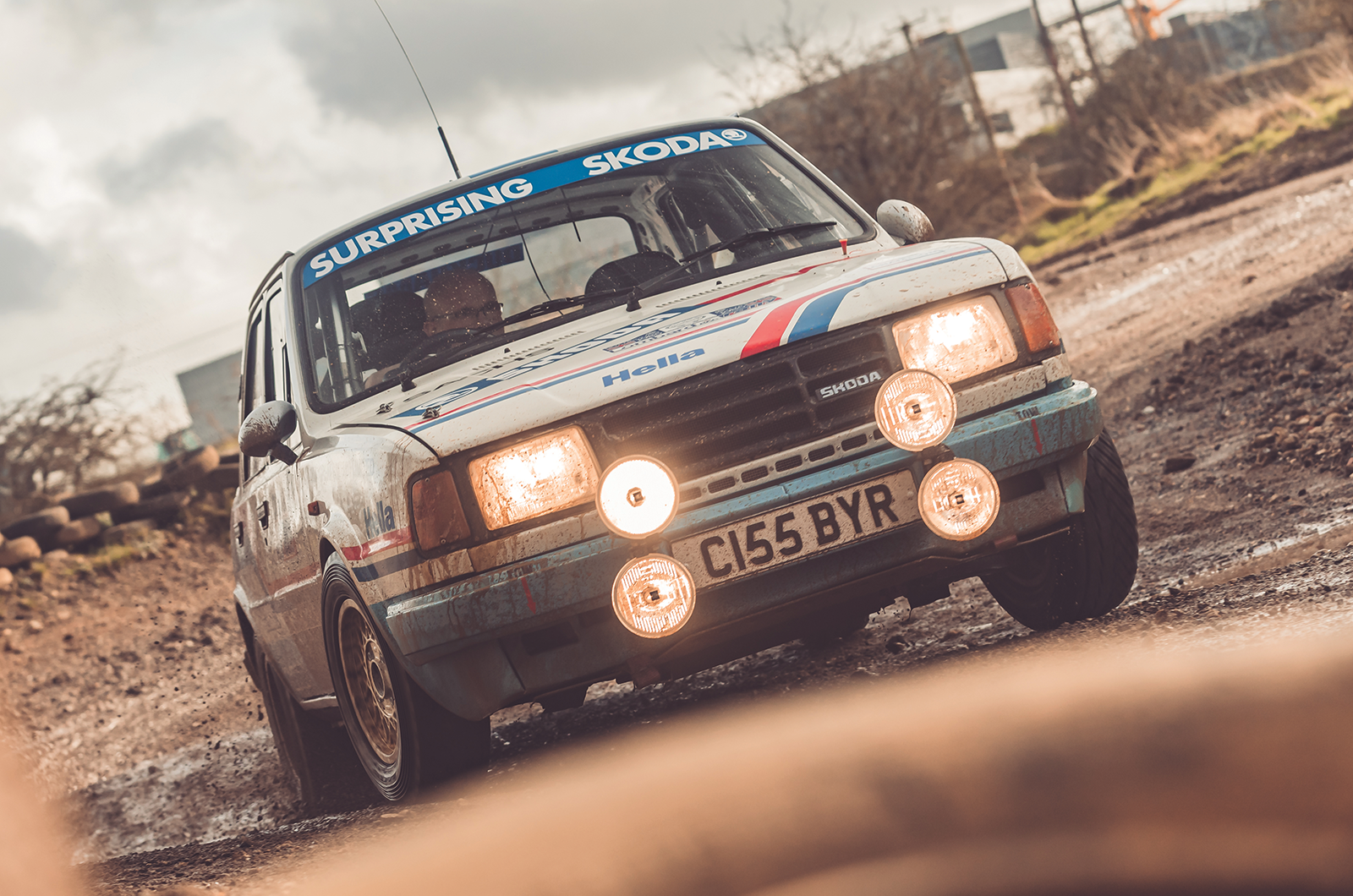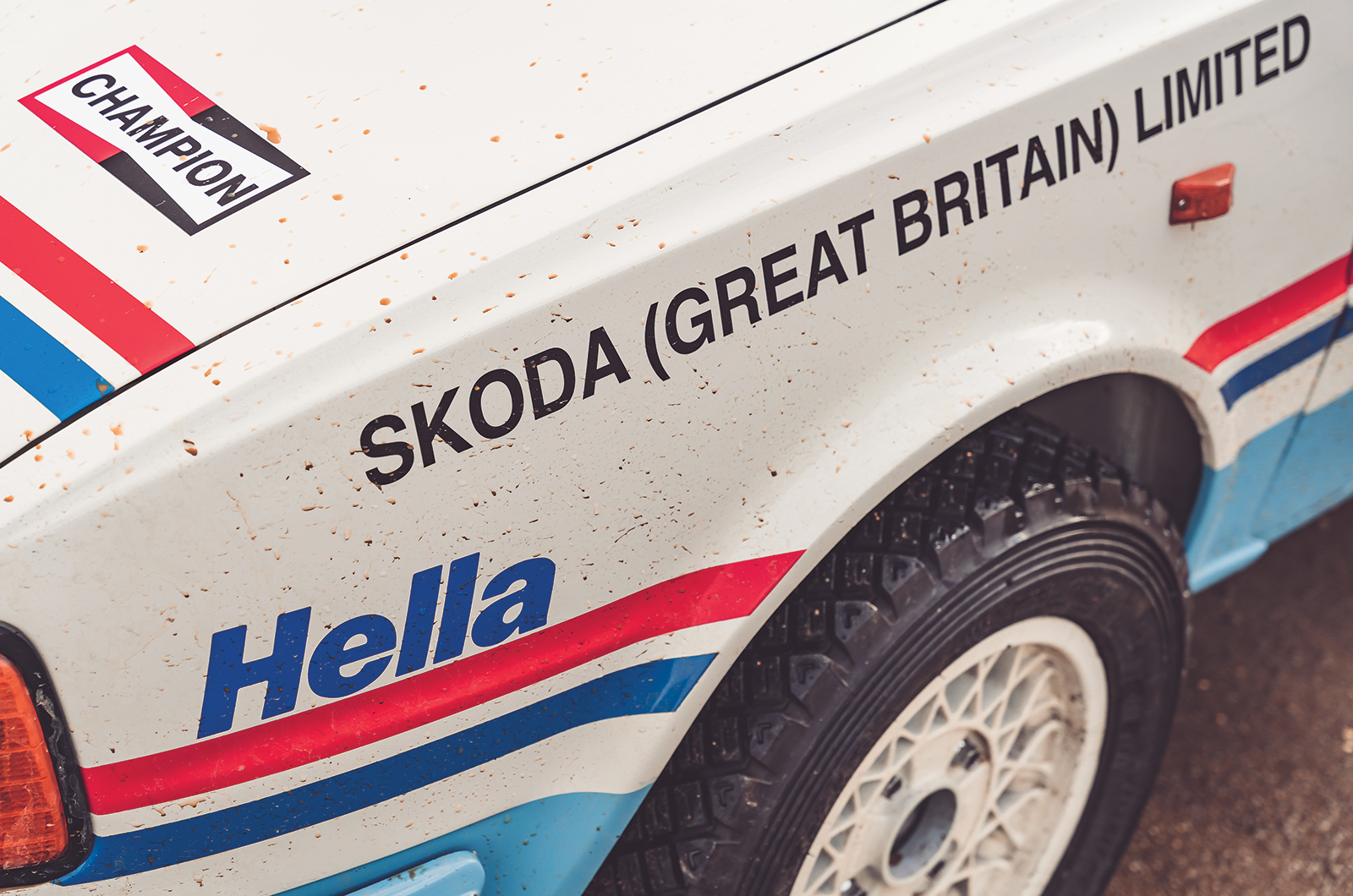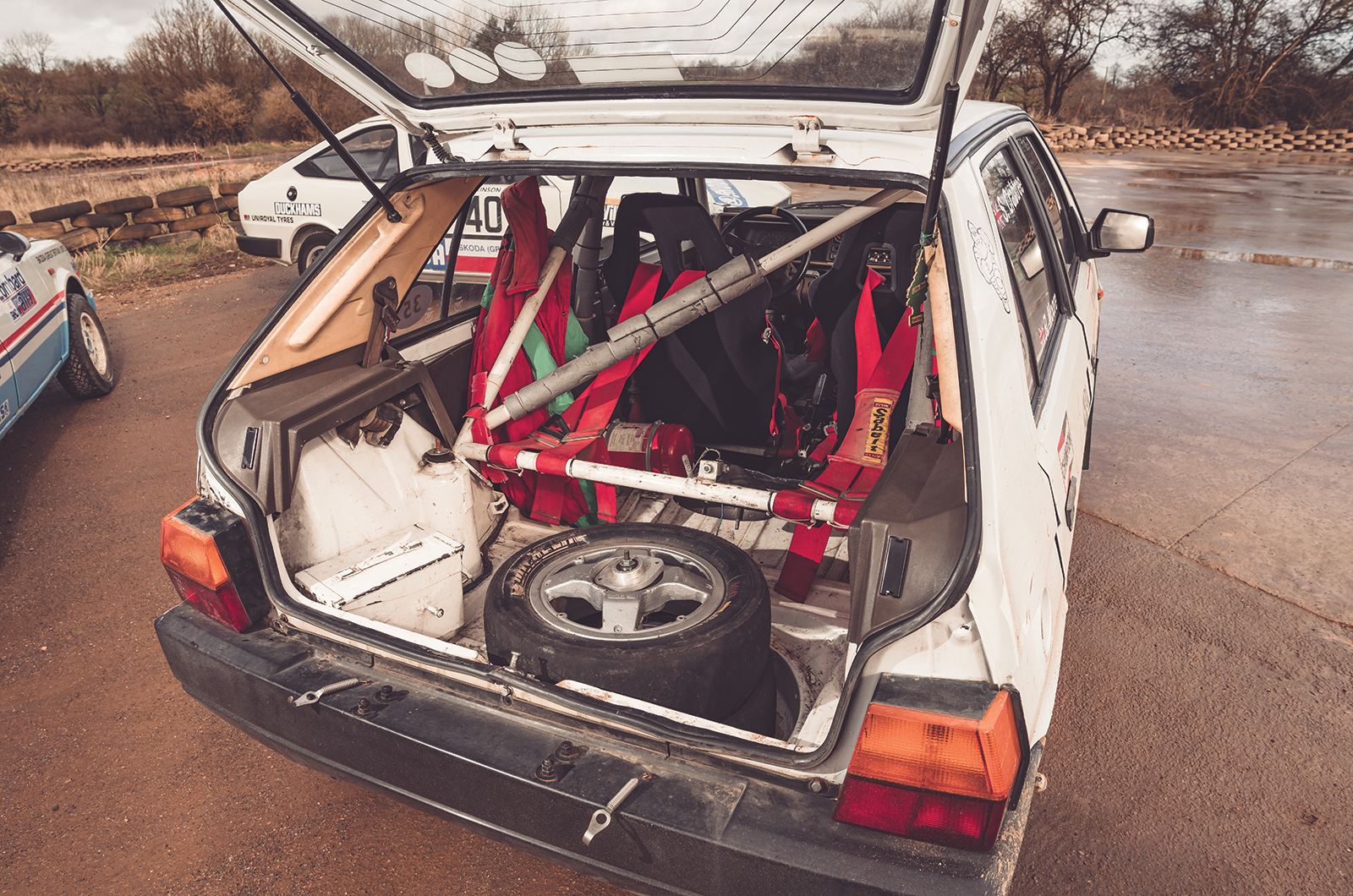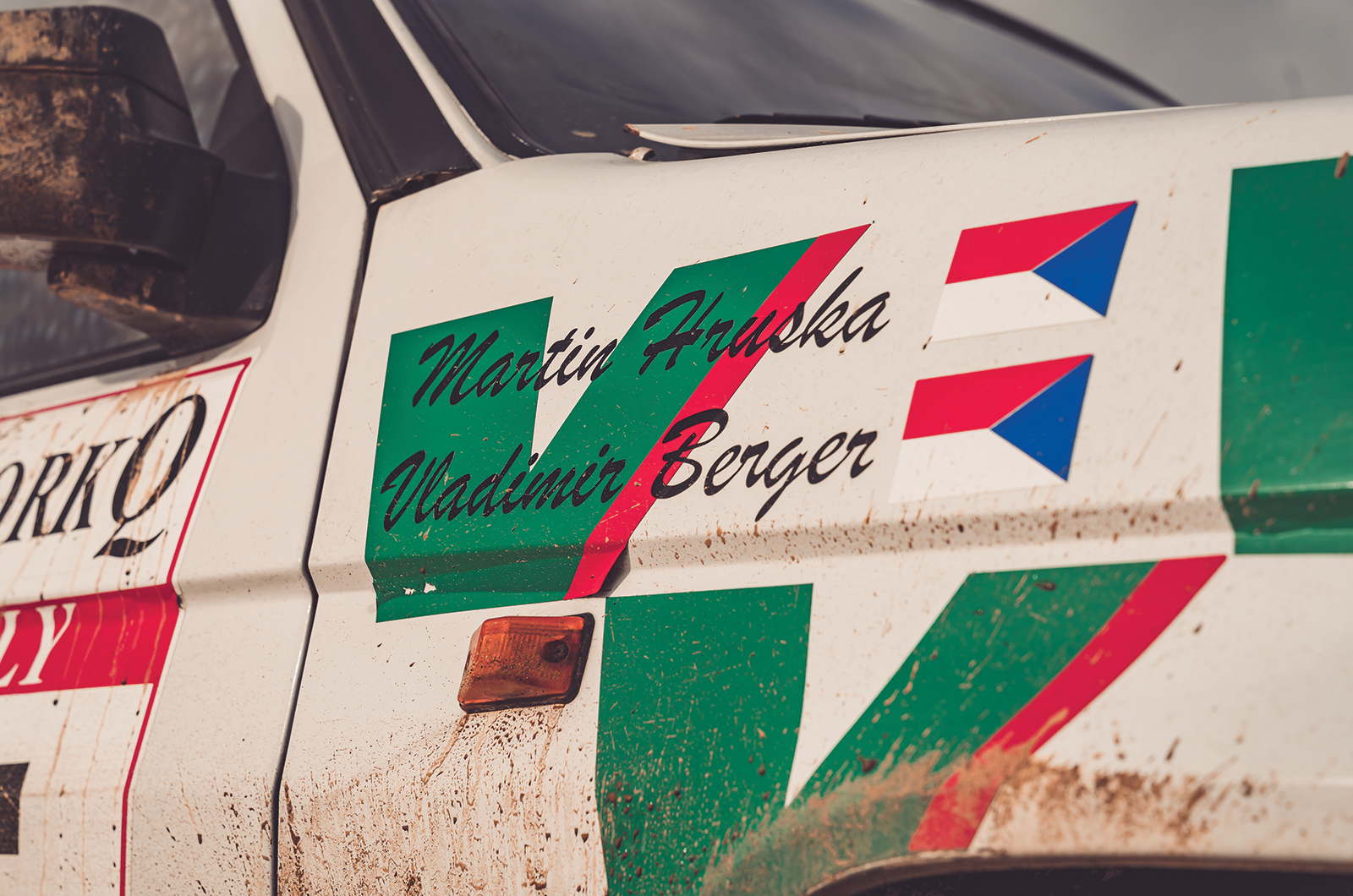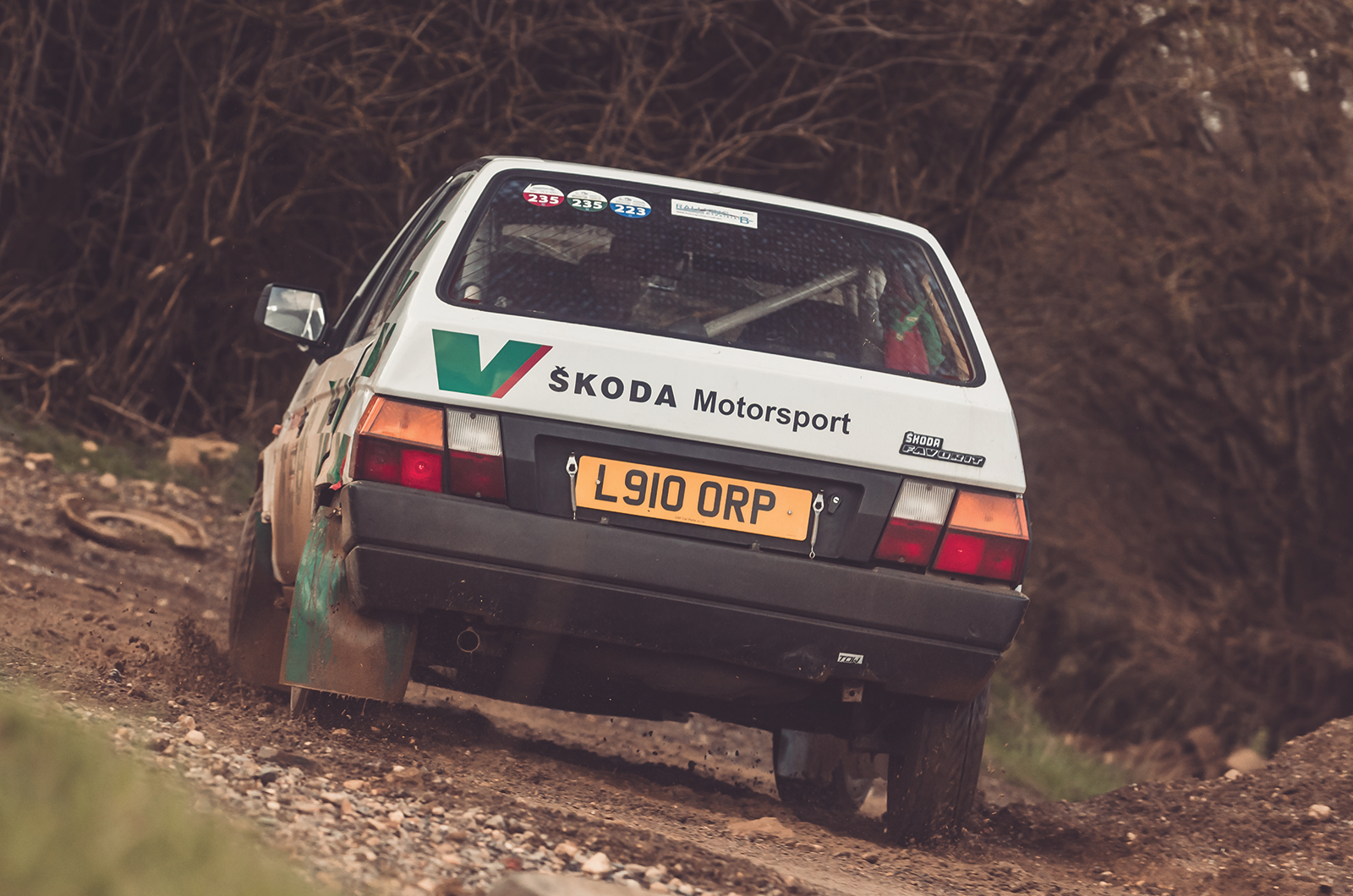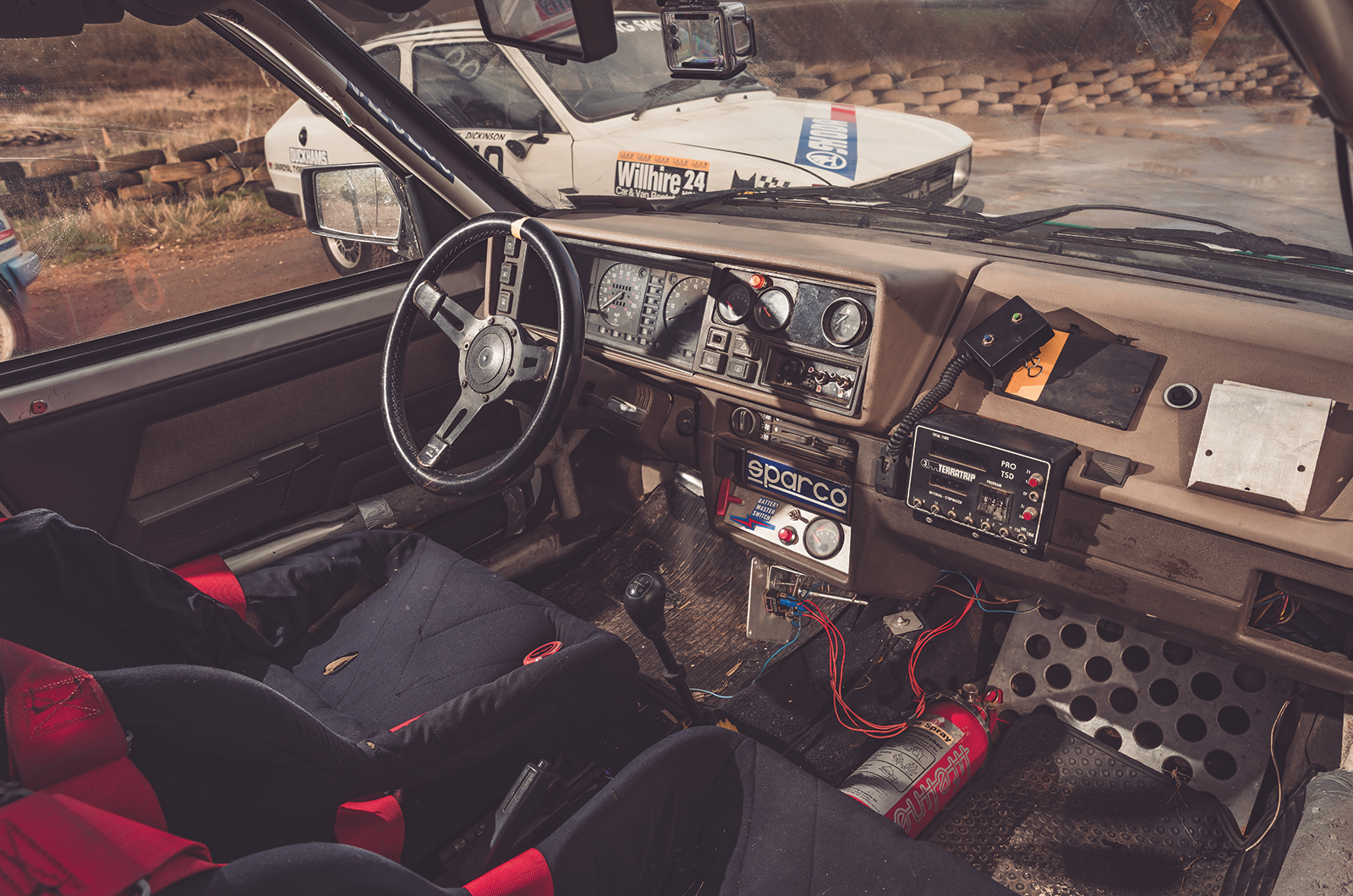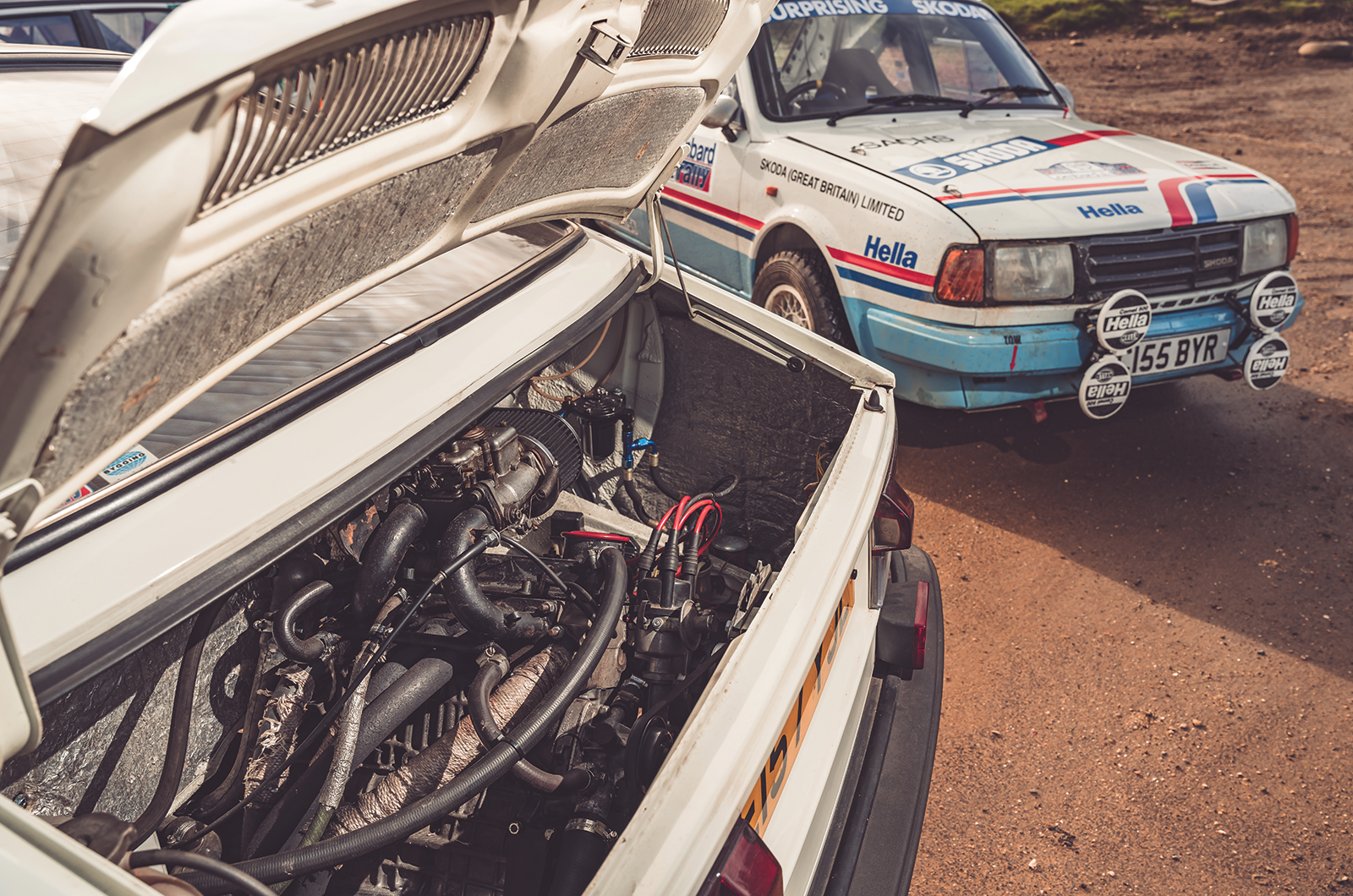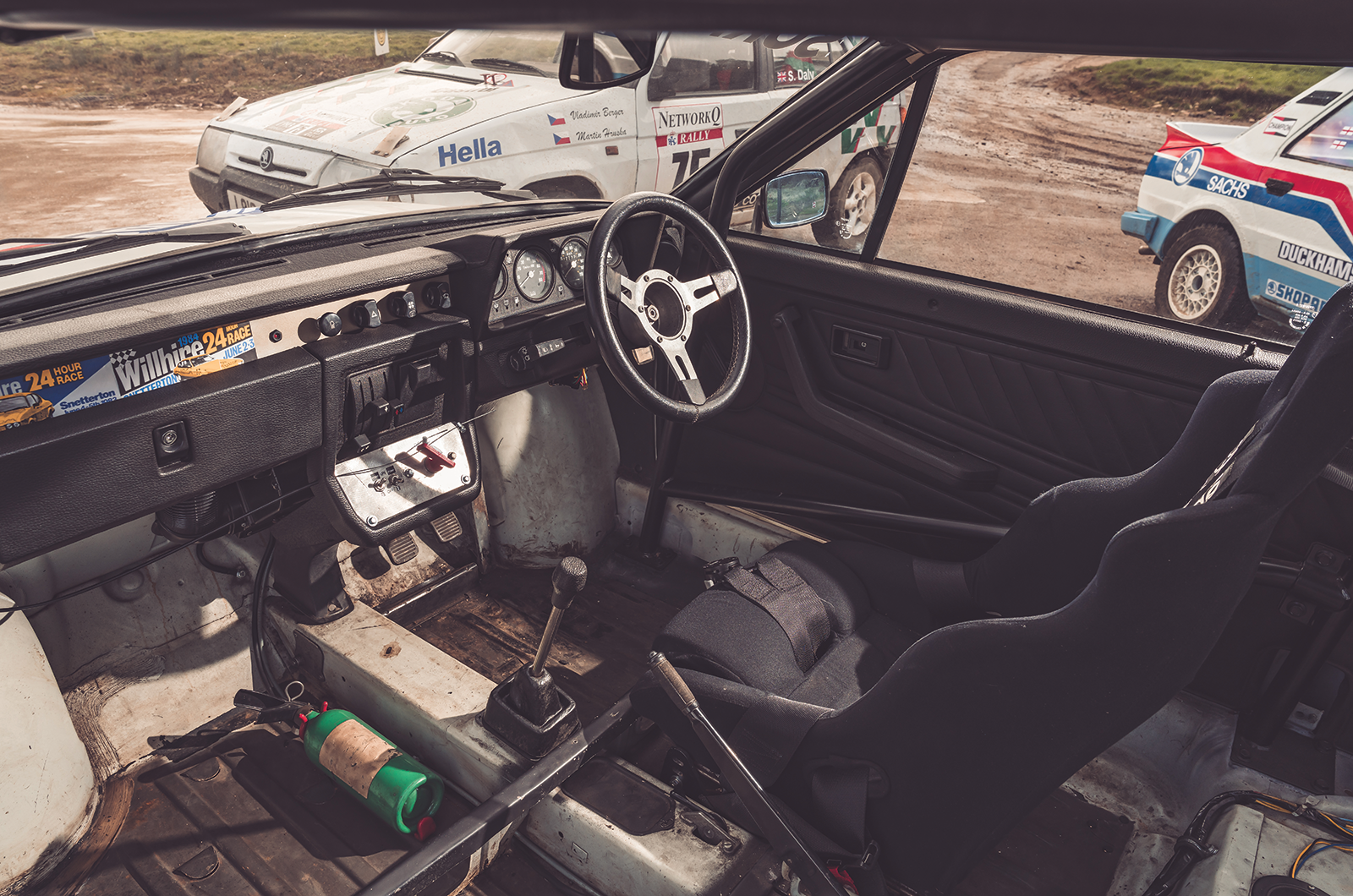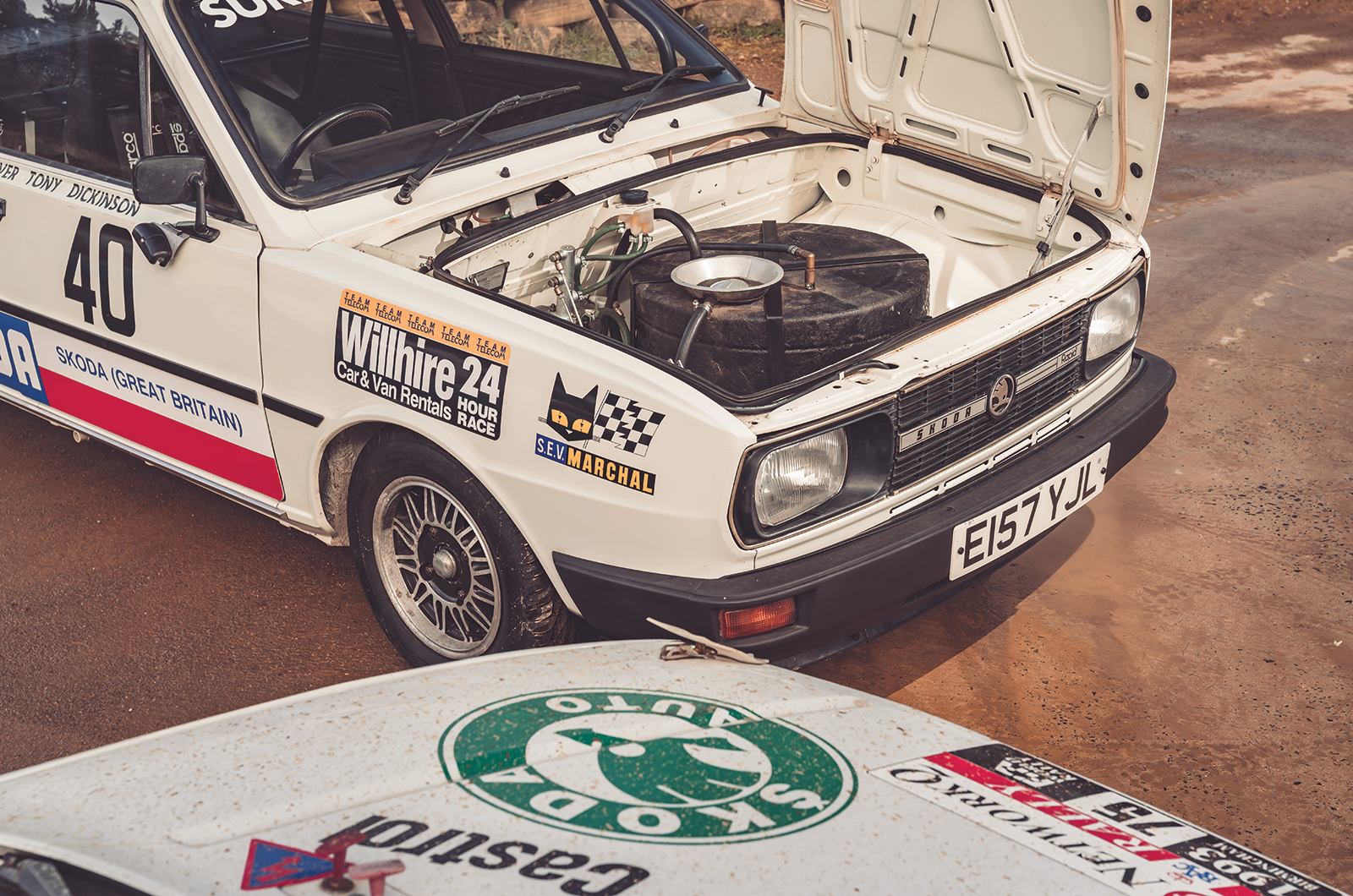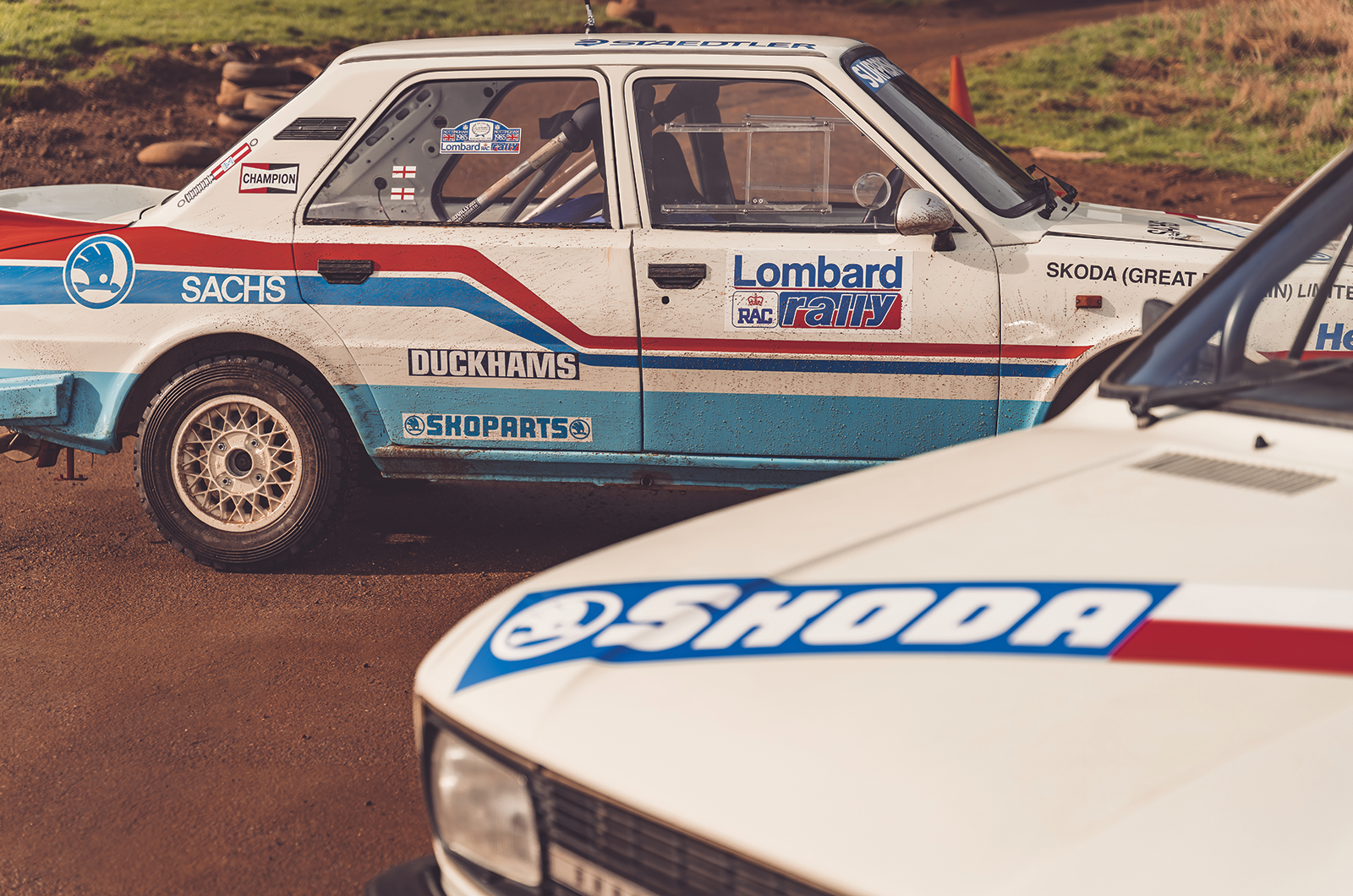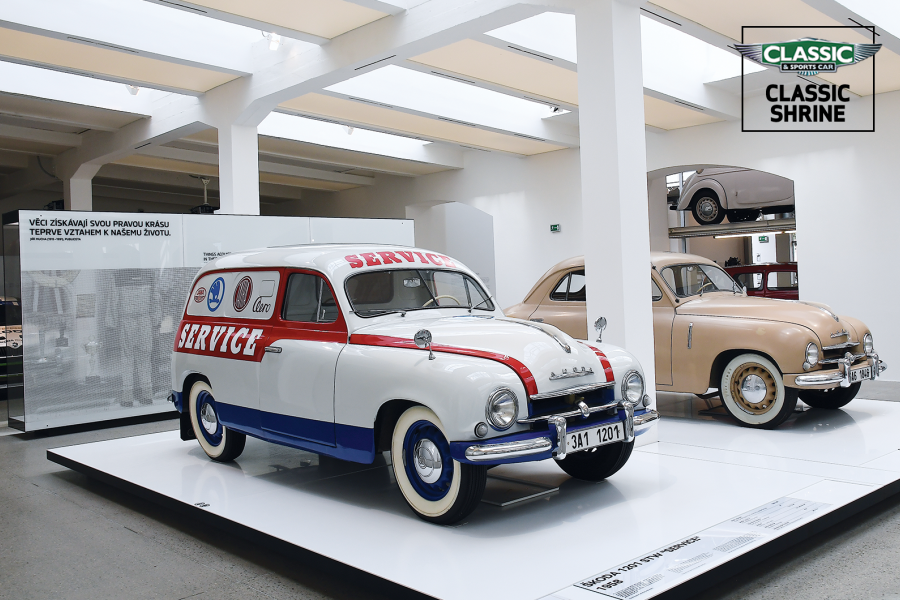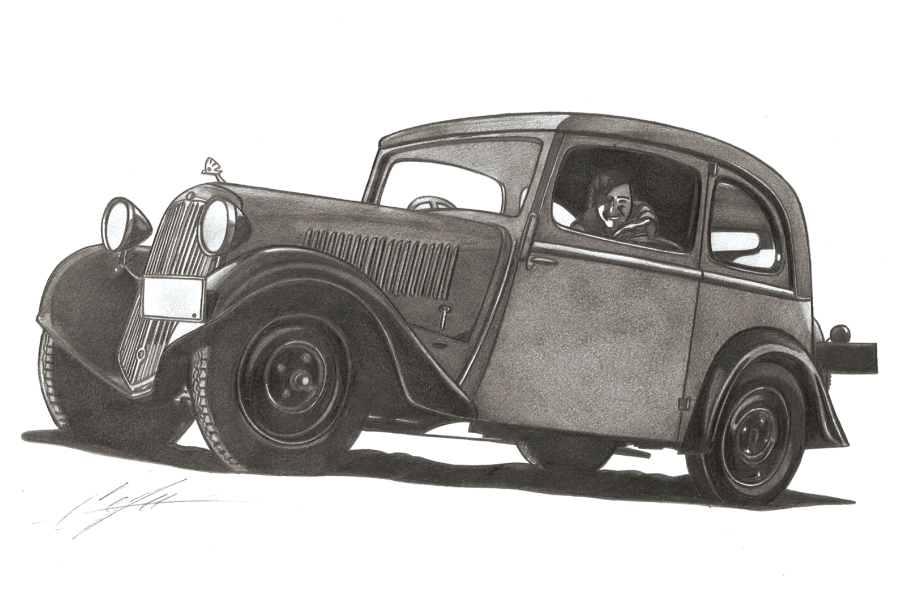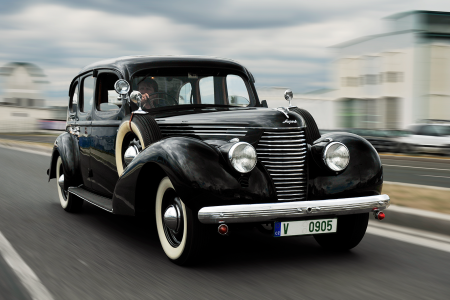Not only is the Favorit hilariously quick, with only around 800kg to shift, but front-end grip is also tenacious, the Gripper LSD seemingly defying physics to allow the driven wheels (shod with forest tyres) to turn in cleanly, even on the course’s slipperiest corners – although torquesteer on exits makes for quite a physical drive.
The Škoda Favorit 136 L’s front LSD turns in hard
The straight-cut ratios are low and the engine is more tractable than the Estelle’s, accompanied by a wonderful soundtrack.
Not entirely faithful to how this Favorit was back in the day, admittedly, but an indicator of why the model also excelled in less restrictive classes.
Windscreens cleaned and the worst of the mud washed off, our rally cars join Simon Dickinson’s 1983 120 Rapid Coupé on the roads skirting another, somewhat cleaner, Silverstone track.
This would have been the Rapid’s natural stomping ground 40 or so years ago – although Škoda GB’s production-car campaign didn’t actually extend to Silverstone, and, as Simon quips, this is the furthest south the car has been in its rather sheltered life.
The Škoda Favorit Group N retains more dashboard than the stripped-out Estelle
Circuit racing was very much a toe-in-the-water exercise for Škoda GB in the early ’80s, but it had the potential to uphold the company’s promise of strong, reliable road cars.
The new 120 Rapid Coupé, launched at the NEC Motor Show in 1982, was seen as the competition flag-bearer for circuit work, not only because of its more rakish two-door styling, but also thanks to a change to more stable, semi-trailing-arm rear suspension and rack-and-pinion steering, versus its saloon siblings.
However, targeting Class E (up to 1300cc) in Production Saloons meant retention of its standard, 57bhp, 1174cc engine.
The only mods allowed were a minimal reduction to ride height and fitment of a long-range fuel tank in the nose (which, according to Simon, improved front-end grip).
The Škoda Rapid saloon racer is agile and thrives on revs
Tony Dickinson, Simon’s late father, had worked with Škoda GB since the ’70s, racing a silhouette Coupé in Special Saloons with a Hart 420R F2 engine, so he was the natural driver choice to front the importer’s circuit-racing hopes.
On 4-5 June 1983, Tony, along with Tim Read, Andy Woolley and Škoda’s Bill Hunt, drove the Rapid in its inaugural race, the Willhire 24 Hour at Snetterton.
Other than a temporary loss of fourth gear, quickly fixed, the car was faultless, not even requiring brake or tyre changes and consuming just one pint of oil.
“The car ran like a dream…,” Tony told Motoring News after the team had taken a class win at an average speed of 63.05mph.
This Škoda 120 Rapid Coupé has ditched its 1174cc unit for a 1289cc 136 lump
The same crew was back for the following year’s event, but, while the Rapid proved equally reliable, it only managed to finish third in class.
Temporarily laid up in 1985, the Škoda was pressed into competition service for one final time at Donington Park’s 4 Hour Production Saloon event in 1986, in which Tony shared the Rapid with Joe Ward.
After 92 laps, the pair finished first in class at an average speed of 57.11mph.
That marked the end of Škoda GB’s circuit-racing aspirations.
This Škoda 120 Rapid Coupé belongs to Simon Dickinson, whose late father, Tony, raced it in period
With so much investment in rallying, it was perhaps inevitable and, as a result, Tony’s Rapid was stored (after being first registered in 1987, hence the ‘E’ prefix) for the following 36 years.
Simon recommissioned the car last year, including powder-coating the suspension and replacing all the rubbers.
And, while the original engine has been preserved, the Rapid is now powered by a slightly more potent 1289cc 136 motor, running on a single Weber 40 carburettor.
It’s a jewel of a road car, too. Other than an ignition cut-off and switches for the front tank’s fuel pumps, the Rapid is stock inside.
The Škoda 120 Rapid Coupé’s sparse cabin reflects its circuit-racing roots
The controls are light and, once you’ve come to terms with the baggy, long-throw gearshift, throttle response is decent, although with a larger carb the engine likes to be revved high for best effect.
Even stripped of its cabin insulation, you leave much of the busy top-end noise behind and start to enjoy the way the Rapid gently bobs down the road, early 911-style.
The steering feels surprisingly pointy, and it takes little effort to lock up the front brakes (a few gallons of fuel in the long-range tank would help).
But understeer is kept in check, and when you push harder through bends the car’s mass settles over its outer rear wheel, with a slight lift merely tightening your line.
Fuel tank under the Škoda’s bonnet
This light, biddable and approachable near-standard Rapid shows how far ahead of the budget pack Škoda was at the time.
Nobody jokes about Škoda today.
That’s in part down to the Volkswagen effect, but it is also thanks to the likes of Messrs Haugland and Dickinson, who pushed the Czech brand’s envelope so far on stage and track.
Images: Max Edleston
Thanks to: Silverstone Rally School, which offers both driver and pacenote tuition, and also runs its own team, giving drivers the chance to experience competition; Simon Dickinson; Simon Daly; John Melling
Factfile
Škoda 130 LR (Gp B)
- Sold/number built 1985-’89/n/a
- Construction steel unitary
- Engine all-alloy, ohv 1289cc ‘four’, two twin-choke Dell’Orto DHLA40 carburettors
- Max power 130bhp @ 7500rpm
- Max torque 114lb ft @ 6000rpm
- Transmission five-speed manual, RWD via limited-slip differential
- Suspension independent, at front by wishbones rear semi-trailing arms; coil springs, telescopic dampers f/r
- Steering rack and pinion
- Brakes ventilated front, solid rear discs; four-piston calipers f/r
- Length 13ft 7¼in (4165mm)
- Width 5ft 2½in (1600mm)
- Height 4ft 7¼in (1400mm)
- Wheelbase 7ft 10⅓in (2400mm)
- Weight 1609lb (730kg)
- Mpg n/a
- 0-60mph 7.2 secs
- Top speed 112mph
- Price new n/a
- Price now £50,000*
Škoda Favorit 136 L (Gp N)
- Sold/number built 1989-’95/n/a
- Construction steel unitary
- Engine all-alloy, ohv 1289cc ‘four’, single Pierburg twin-choke carburettor
- Max power 67bhp @ 6250rpm
- Max torque 100lb ft @ 5000rpm
- Transmission five-speed manual, FWD via open differential
- Suspension: front independent, by MacPherson struts rear torsion beam, trailing arms, coil springs; Leda adjustable dampers f/r
- Steering rack and pinion
- Brakes discs front, drums rear
- Length 12ft 6in (3815mm)
- Width 5ft 3¾in (1620mm)
- Height 4ft 7¾in (1415mm)
- Wheelbase 8ft 4in (2450mm)
- Weight 1720lb (780kg)
- Mpg n/a
- 0-60mph 14.3 secs
- Top speed 92mph
- Price new n/a
- Price now £30,000*
Škoda 120 Rapid Coupé (Gp N)
- Sold/number built 1983-’90/n/a
- Construction steel unitary
- Engine all-alloy, ohv 1174cc ‘four’, single Jikov twin-choke carburettor
- Max power 57bhp @ 5000rpm
- Max torque 66lb ft @ 3500rpm
- Transmission four-speed manual, RWD
- Suspension independent, at front by wishbones rear semi-trailing arms; coil springs, telescopic dampers f/r
- Steering rack and pinion
- Brakes discs front, drums rear
- Length 13ft 7¾in (4200mm)
- Width 5ft 2⅔in (1600mm)
- Height 4ft 5½in (1380mm)
- Wheelbase 7ft 10⅓in (2400mm)
- Weight 1962lb (890kg)
- Mpg 35.9
- 0-60mph 16.1 sec
- Top speed 95mph
- Price new n/a
- Price now £20,000*
*Prices correct at date of original publication
Enjoy more of the world’s best classic car content every month when you subscribe to C&SC – get our latest deals here
READ MORE
20 of the coolest rally cars
Mercedes-Benz 450SLC 5.0: the world’s least likely rally car?
Renault 8 Gordini vs Sunbeam Imp Sport vs NSU Prinz 1200 TT: back-pocket rockets
Simon Hucknall
Simon Hucknall is a senior contributor to Classic & Sports Car
